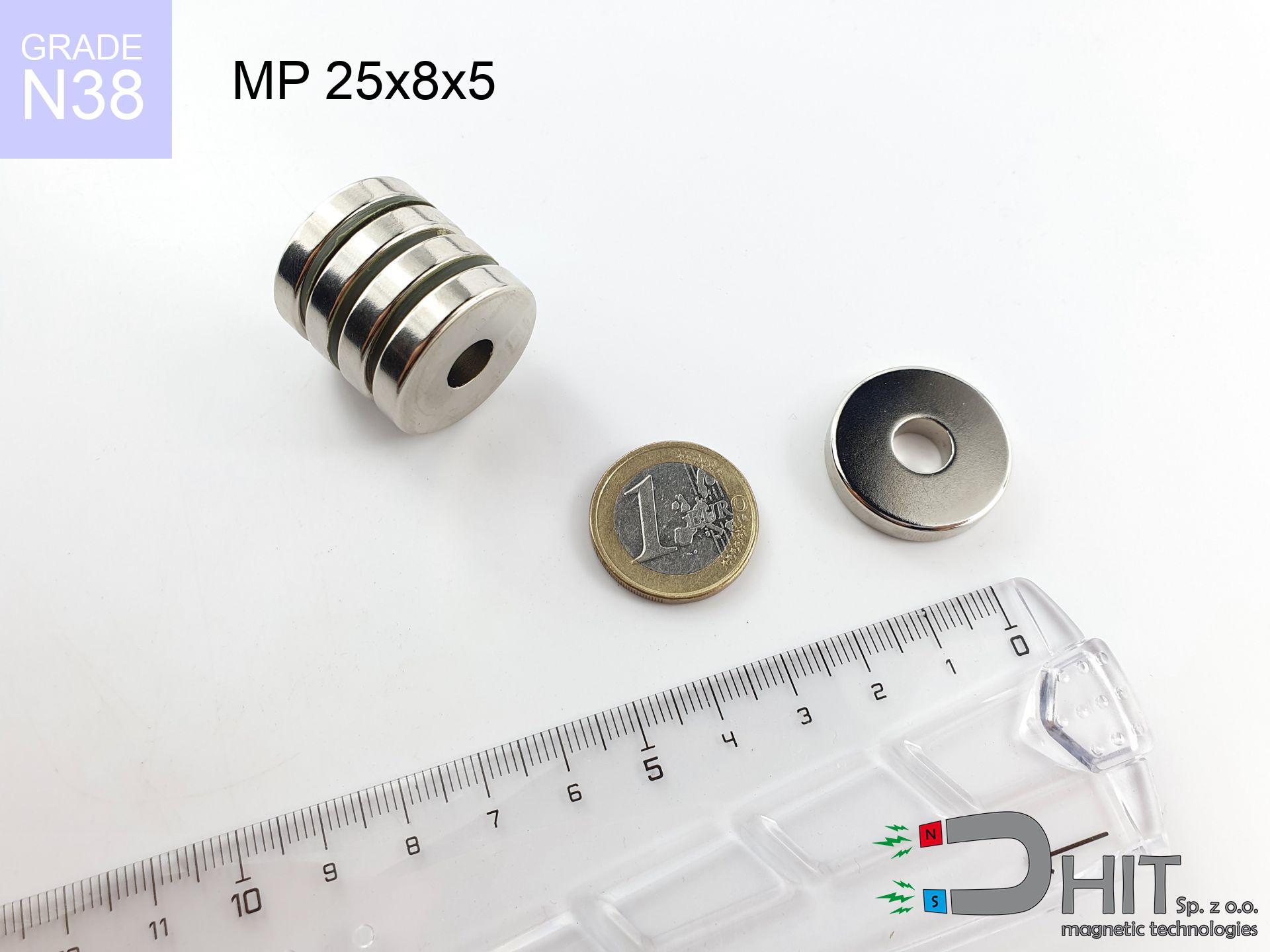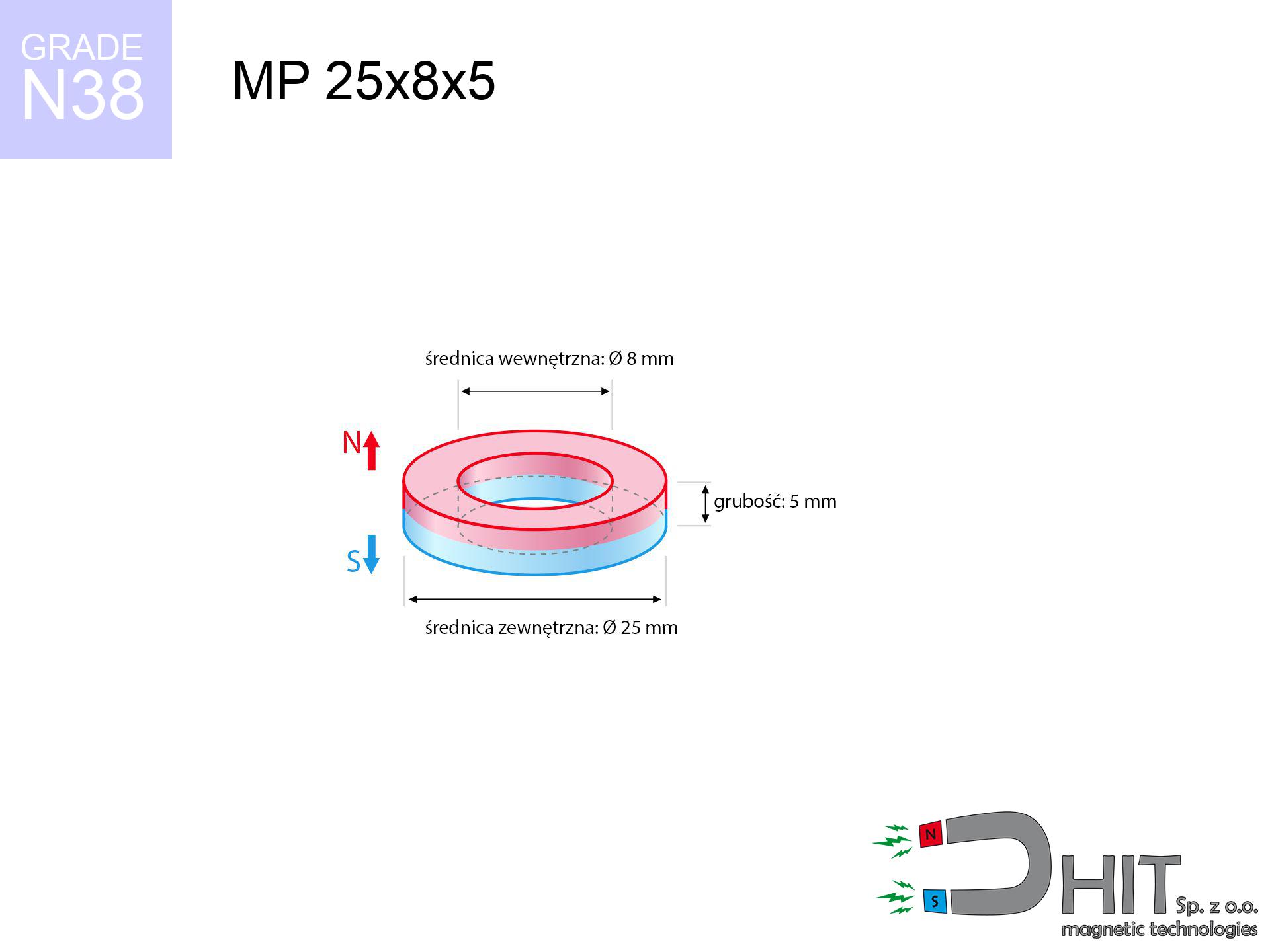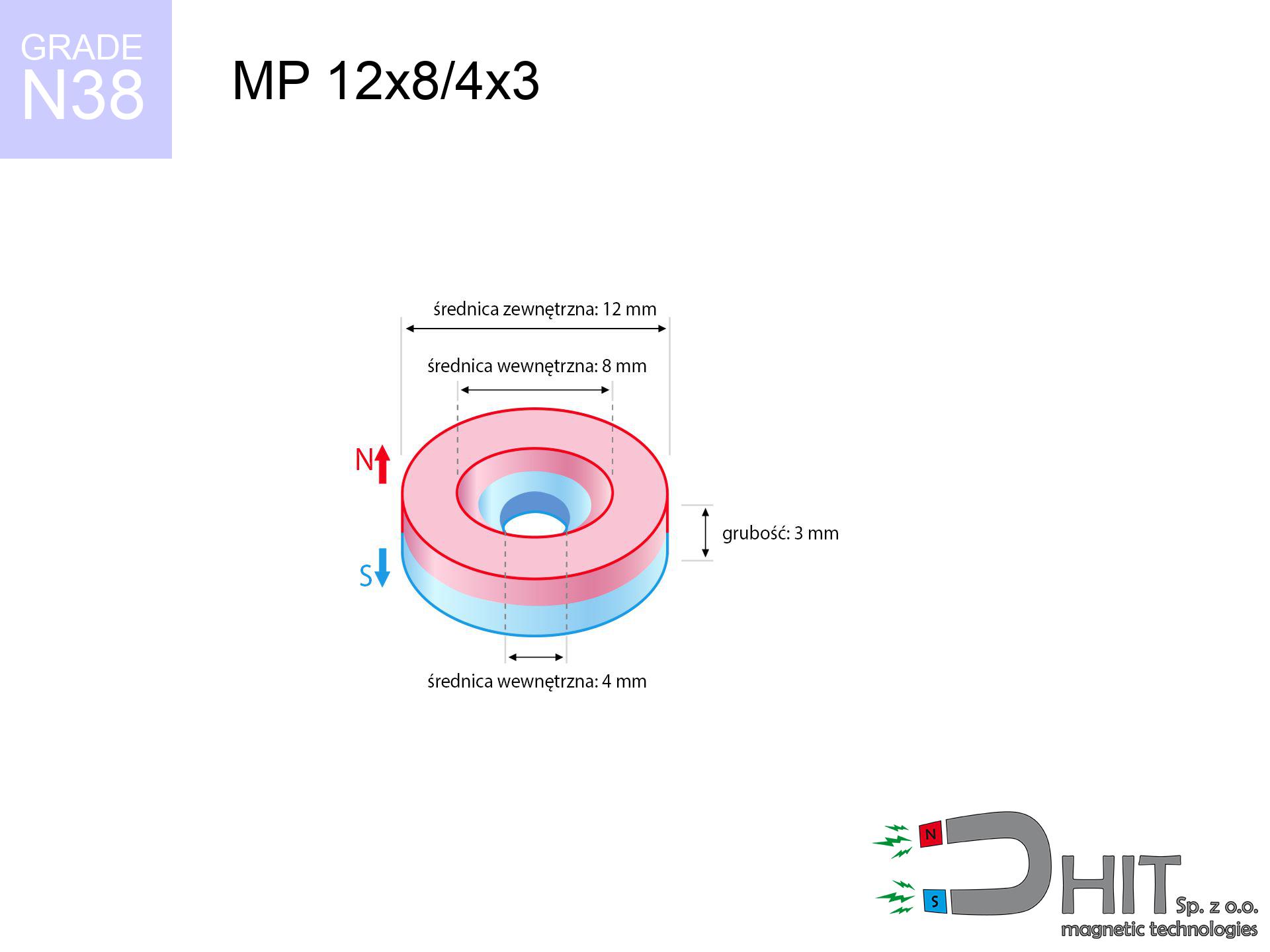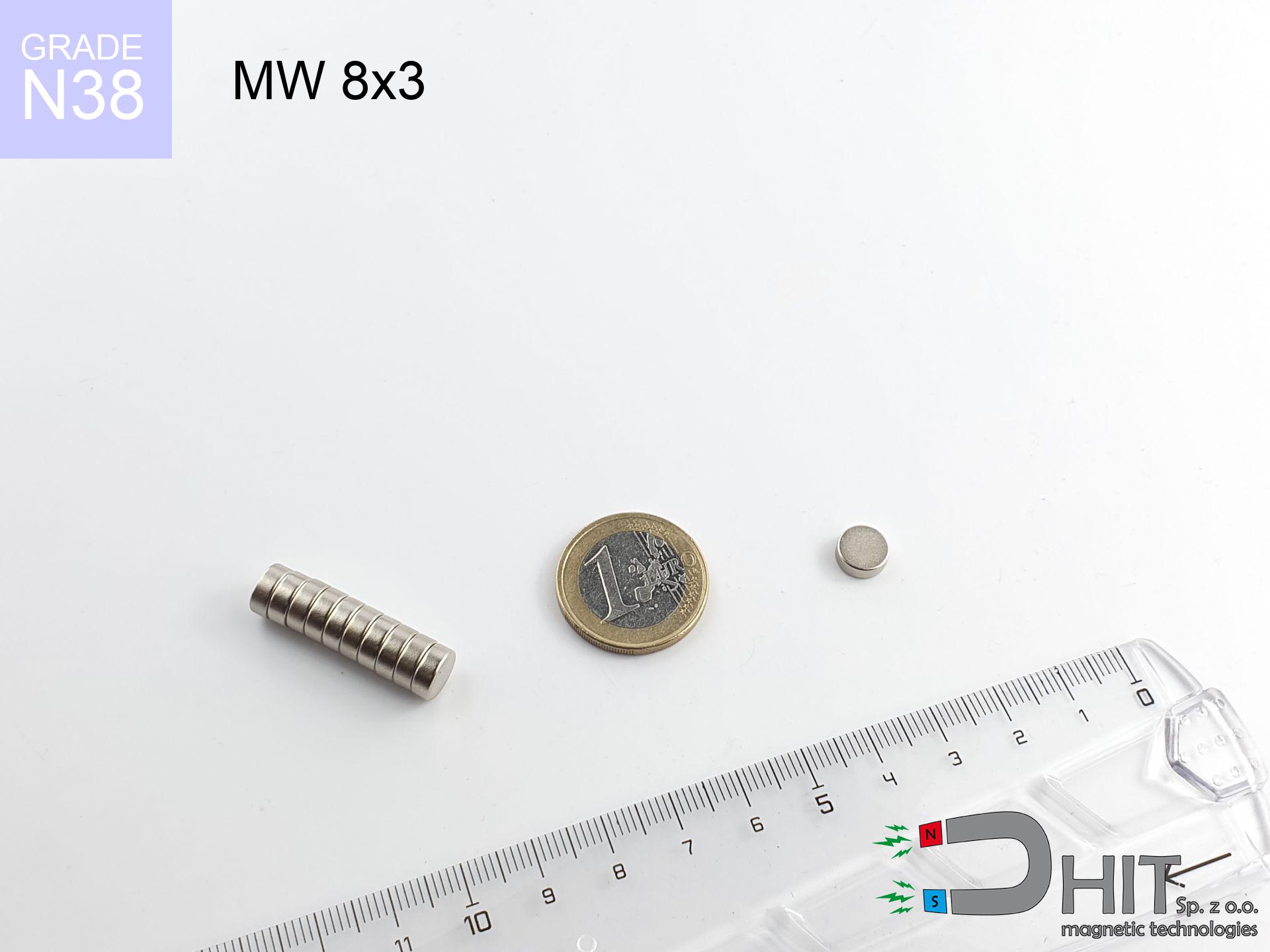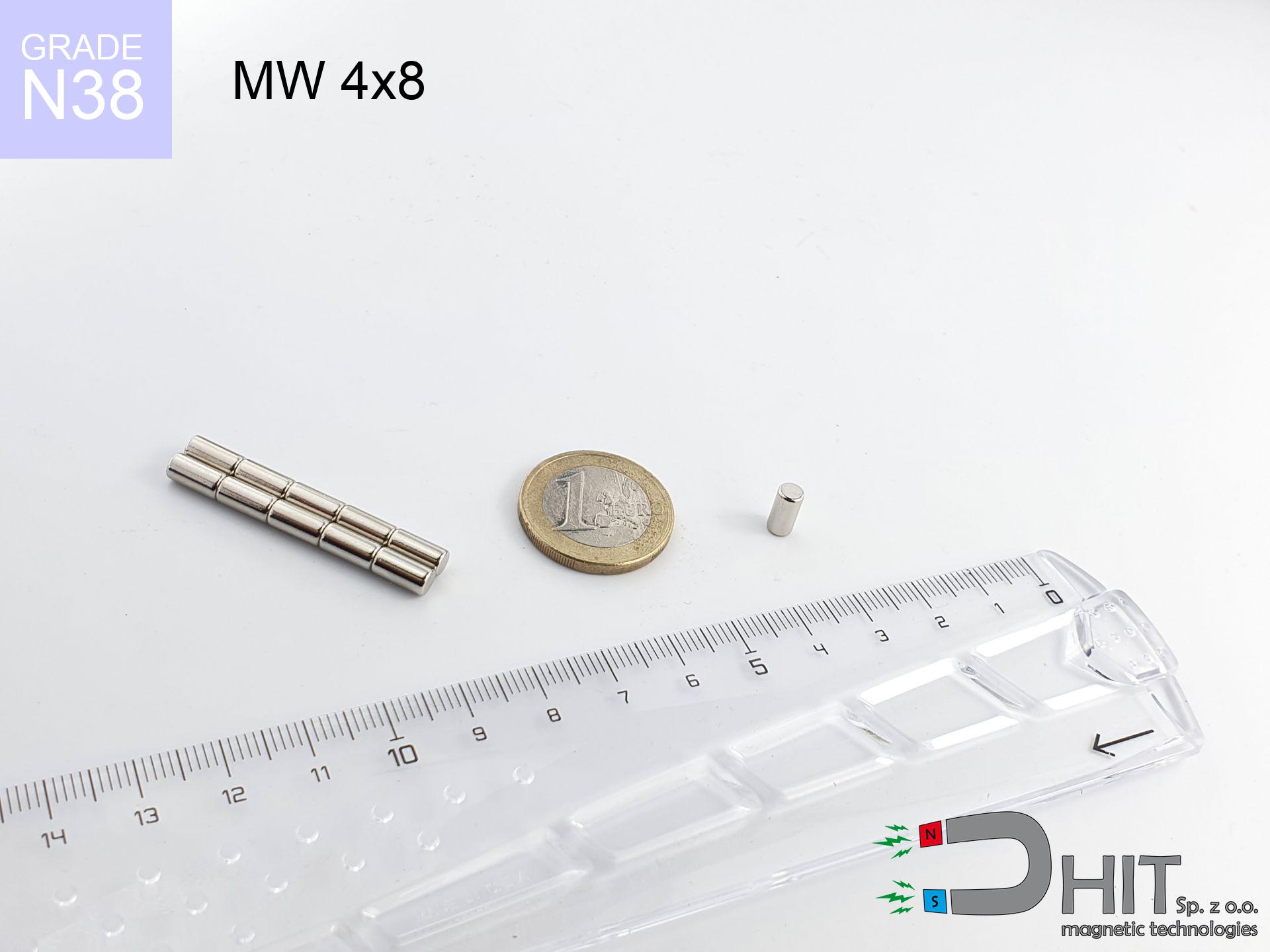MP 25x8x5 / N38 - neodymium magnet
ring magnet
catalog number 030196
GTIN: 5906301812135
external diameter Ø
25
mm [±0,1 mm]
internal diameter Ø
8
mm [±0,1 mm]
height
5
mm [±0,1 mm]
magnetizing direction
↑ axial
capacity ~
2.28 kg / 22.36 N
magnetic induction ~
253.21 mT / 2,532 Gs
max. temperature
≤ 80
°C
catalog number 030196
GTIN: 5906301812135
external diameter Ø
25 mm [±0,1 mm]
internal diameter Ø
8 mm [±0,1 mm]
height
5 mm [±0,1 mm]
magnetizing direction
↑ axial
capacity ~
2.28 kg / 22.36 N
magnetic induction ~
253.21 mT / 2,532 Gs
max. temperature
≤ 80 °C
5.90 ZŁ gross price (including VAT) / pcs +
4.80 ZŁ net price + 23% VAT / pcs
bulk discounts:
need more quantity?Want to talk about magnets?
Give us a call tel: +48 888 99 98 98 or contact us via contact form on our website. You can check the mass and the appearance of neodymium magnet in our force calculator magnetic mass calculator
Orders placed by 2:00 PM will be shipped on the same business day.
Specification: ring magnet 25x8x5 / N38 ↑ axial
Magnetic properties of the material N38
Physical properties of sintered neodymium magnets Nd2Fe14B
Shopping tips
Advantages and disadvantages of neodymium magnets NdFeB.
In addition to immense strength, neodymium magnets have the following advantages:
- They do not lose their strength (of the magnet). After approximately 10 years, their power decreases by only ~1% (theoretically),
- They are highly resistant to demagnetization by external magnetic sources,
- By applying a shiny coating of nickel, gold, or silver, the element gains an aesthetic appearance,
- They possess very high magnetic induction on the surface of the magnet,
- By using an appropriate combination of materials, they can achieve high thermal resistance, allowing them to operate at temperatures up to 230°C and above...
- The ability for precise shaping or customization to specific needs – neodymium magnets can be produced in a wide range of shapes and sizes, which amplifies their universality in usage.
- Significant importance in the industry of new technologies – are used in HDD drives, electric drive mechanisms, medical apparatus or various technologically advanced devices.
Disadvantages of neodymium magnets:
- They are prone to breaking as they are fragile when subjected to a strong impact. If the magnets are exposed to impacts, we recommend using magnets in a protective case. The steel housing in the form of a holder protects the magnet from impacts and also increases its overall strength,
- Magnets lose their power due to exposure to high temperatures. In most cases, when the temperature exceeds 80°C, these magnets experience permanent reduction in strength (although it is worth noting that this is dependent on the shape and size of the magnet). To avoid this problem, we offer special magnets marked with the [AH] symbol, which exhibit high temperature resistance. They can operate even at temperatures as high as 230°C or more,
- Magnets exposed to a humid environment can corrode. Therefore, when using them outdoors, we recommend using waterproof magnets made of rubber, plastic, or other moisture-resistant materials,
- Limited ability to create threads or complex shapes in the magnet - the use of a housing is recommended - magnetic holder
- Possible danger associated with microscopic parts of magnets can be dangerous, in case of ingestion, which is particularly important in the aspect of protecting young children. Additionally, miniscule components of these devices have the potential to hinder the diagnostic process when they are in the body.
Handle Neodymium Magnets Carefully
Dust and powder from neodymium magnets are flammable.
Do not attempt to drill into neodymium magnets. Mechanical processing is also not recommended. If the magnet is crushed into fine powder or dust, it becomes highly flammable.
Neodymium magnetic are especially delicate, which leads to their breakage.
Neodymium magnets are characterized by significant fragility. Magnets made of neodymium are made of metal and coated with a shiny nickel, but they are not as durable as steel. In the event of a collision between two magnets, there may be a scattering of fragments in different directions. Protecting your eyes is crucial in such a situation.
Neodymium magnets are not recommended for people with pacemakers.
Neodymium magnets generate strong magnetic fields. As a result, they interfere with the operation of a pacemaker. This happens because such devices have a function to deactivate them in a magnetic field.
Avoid bringing neodymium magnets close to a phone or GPS.
Strong fields generated by neodymium magnets interfere with compasses and magnetometers used in navigation, as well as internal compasses of smartphones and GPS devices.
Neodymium magnets are over 10 times stronger than ferrite magnets (the ones in speakers), and their strength can shock you.
Please review the information on how to handle neodymium magnets and avoid significant harm to your body, as well as prevent unintentional disruption to the magnets.
Avoid contact with neodymium magnets if you have a nickel allergy.
Studies clearly indicate a small percentage of people who suffer from metal allergies such as nickel. An allergic reaction often manifests as skin redness and rash. If you have a nickel allergy, you can try wearing gloves or simply avoid direct contact with nickel-plated neodymium magnets.
Neodymium magnets can attract to each other due to their immense internal force, causing the skin and other body parts to get pinched and resulting in significant injuries.
If have a finger between or alternatively on the path of attracting magnets, there may be a serious cut or even a fracture.
Neodymium magnets can become demagnetized at high temperatures.
Despite the fact that magnets have been observed to maintain their efficacy up to temperatures of 80°C or 175°F, it's essential to consider that this threshold may fluctuate depending on the magnet's type, configuration, and intended usage.
Neodymium magnets should not be in the vicinity youngest children.
Neodymium magnets are not toys. You cannot allow them to become toys for children. In such a situation, surgery is necessary to remove them. In the worst case scenario, it can result in death.
Make sure not to bring neodymium magnets close to the TV, wallet, and computer HDD.
The strong magnetic field generated by neodymium magnets can damage magnetic media such as floppy disks, video tapes, HDDs, credit cards, magnetic ID cards, cassette tapes, or other devices. They can also destroy devices like video players, televisions, CRT computer monitors. Do not forget to keep neodymium magnets away from these electronic devices.
To raise awareness of why neodymium magnets are so dangerous, read the article titled How dangerous are very powerful neodymium magnets?.

